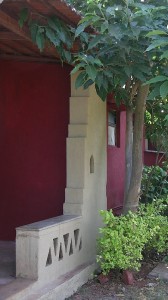Architectural Design
 Architecture gives me the best opportunity to practice my ecological design principles. The aim is to show that construction can be economical and nature-friendly at the same time. Continue reading
Architecture gives me the best opportunity to practice my ecological design principles. The aim is to show that construction can be economical and nature-friendly at the same time. Continue reading

v |
i |
s |
t |
a |
s |
p |
m |
e |
h |
t |
a
|
 Architecture gives me the best opportunity to practice my ecological design principles. The aim is to show that construction can be economical and nature-friendly at the same time. Continue reading
Architecture gives me the best opportunity to practice my ecological design principles. The aim is to show that construction can be economical and nature-friendly at the same time. Continue reading
If you’ve received an email supposedly from IKEA telling you about a fantastic new and free Home Planning Software, please note that it is (surprise, surprise!) a virus. Ralph Grabowski of WorldCAD Access received just such a mail and has posted a screenshot. IKEA, meanwhile have clearly stated that this email is a fake and a scam. Given that it installs a trojan on your system, I’d say it’s far worse…
Not exactly a name I’d choose for a website, but never mind. The content is wonderful.
Stair Porn via :: TreeHugger
I was designing an ovoid conference room the other day and trying to remember the string and pin method of drawing an ellipse because, at some stage, I’ll have to mark it out on site. Headed off to the world’s favourite search engine and after a couple of mis-hits, landed on Math Open Reference which shows a simple animation of how to do it. The site also has tons of other simple geometry stuff. A definite bookmark.
Go to :: Math Open Reference
Scientists at a British company, Ceravision, have developed an alternative light bulb which has an energy efficiency of 50% (compared to 5% for incandescents and 15% for fluorescent tubes). As if that’s not enough, this bulb should last for decades and doesn’t contain mercury either. I can’t say I fully understand the technicalities but it involves microwaves being pushed through a hole in a piece of aluminium oxide. In theory this “everlasting bulb” looks like an excellent development but, eventually, it boils down to how many lumens it gives per watt of power consumed.
Go to: Everlasting light via: TreeHugger
I’ve always been fascinated by LED lighting and, in the recent past, it has taken great strides to become the most efficient artificial light source for mainstream use. What makes it even more interesting for an architect is the versatility of the technology. And still, the lowly tube-light is not very far behind; it even beats its newer cousin – the compact fluorescent in terms of cost-efficiency. Have a look at this straight comparison between the most commonly used types of lighting.
And, if anyone still thinks incandescent lights aren’t all that bad, the table on this page will dispel the darkness.
Full Report :: Treehugger :: What is the Most Energy Efficient Light Source?
Solar pipes are not new but they usually employ fibre optics which makes them cost more than many people are willing to shell out. This system, on the other hand uses highly reflective pipes instead and, if it is anything like it should, technically, be, it might do a lot to reduce our consumption of electricity.
With light pipes, there is no conversion of energy and, therefore, the losses are minimal. One thing to remember, however, is that such a system will not be kind to less than perfect installation – one end of the pipe starts in the roof and you don’t want your light pipe carrying in water as well.
I was naturally looking for a dealer in India to get an idea of cost but – not surprisingly, there are none. Not yet, at least. Anyone out there who wants to be one? Please?
A British company has also got a product that combines a light-pipe with a vent to make something they call Monovent. Interesting.
:: SolaTube :: via: Treehugger
This may not be great dinner-table conversation but simply separating urine from excreta can make a huge difference to how we approach the issue of human waste. Wost Man Ecology, a firm run by Swedish farmer Ingvar-Nilsson, makes separating toilets that are now selling all across the world. Essentially, the urine can be directly used as a source of urea while the solid waste composts (and turns into fertiliser) much quicker when it’s dry.
As bamboo makes its way into the building industry mainstream, this article questions whether it is always as green as it’s made out to be. We need a neutral body to certify the processes involved in growing and manufacturing bamboo products.
Full Article: Bamboo in Construction: Is the Grass Always Greener?
More and more people both, architects and material suppliers, are jumping onto the “green architecture” bandwagon but how many practices really follow any sort of eco-principles. Just calling something green doesn’t necessarily make it so.
The term “greenwashing” has entered the lexicon to mean giving the appearance of being green without providing substantive environmental benefit.